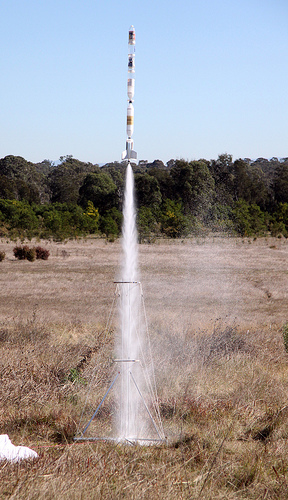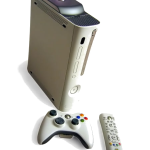A water rocket is a great way to introduce kids to basic principles of science such as the laws of motion by Sir Isaac Newton. Learning how to build a water rocket is very easy, and it is a fun scientific experiment to perform.
The materials that will be needed in order to build a water rocket are a couple of 1250 ml plastic bottles, cardboard, and of course, water. The tools that will be used are a knife, a tape measure, paint, a pair of scissors, a pen or pencil, tape and glue. To launch the rocket, an air pump will be required.
The first step is to prepare the plastic bottles by washing them thoroughly, making sure that any labels, stickers or traces of adhesive are completely removed. Cut one of the plastic bottles into 3 segments. The top and middle sections are retained, and the top portion is then taped to the bottom part.
Resume construction of the water rocket using the second plastic bottle. Tape the first bottle’s middle portion to the second bottle’s upper part. Combine both pieces together.
The next step is creating the water rocket’s fins. A triangle shape is drawn on 4 pieces of cardboard and then cut out with a pair of scissors. The fins should all have equal measurements. To ensure that their sizes match, set the 4 cardboard pieces on top of each other, draw the shape on the cardboard piece on top, and then cut all 4 pieces simultaneously. This will guarantee that the 4 fins will have the same dimensions.
Mark the areas of the bottle where the 4 fins are to be positioned. If necessary, employ a tape measure in order to ensure proper alignment. Glue each of the 4 fins firmly onto the bottle, and then give it time to dry before testing out the water rocket.
Once the fins have dried, the water rocket can be prepared for launch. Fill the bottle with water, and then use the air pump to pump air into it. The atmospheric level pressure should be set to approximately 75% in order for the rocket to be propelled up.
Here are a few additional tips to consider when building a water rocket. The larger the size of the nozzle used, the longer the rocket will remain in the air. On the other hand, a smaller nozzle will make the rocket go higher.
Soap is known to be able to increase a water rocket’s velocity, but this only works some of the time. But it is much more important to take note of the air pressure, as pumping in too much air could be damaging to the bottle. Avoid putting in more than 75% air pressure to be on the safe side.
If one opts to paint the water rocket, be sure to wear a mask while painting. Better yet, it would be much easier and faster to decorate the bottle with stickers instead of painting on it. One can even make up their own design and just stick it on the rocket.
When pumping air into the water rocket, be sure to be at a safe distance so as not to get hurt should it explode because too much air is pumped into it. Also, the rocket should never be launched indoors. When launching outdoors, do so in a place where there are no people. Avoid aiming the rocket at other people, and do not launch it anywhere near buildings.



